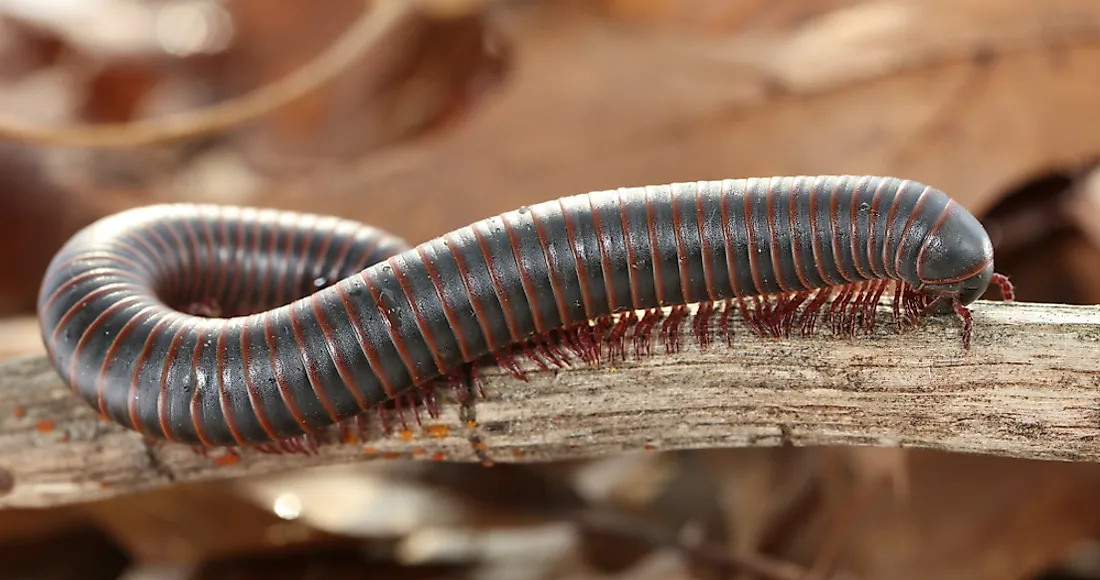What Is The Difference Between A Centipede And A Millipede?

Millipedes and centipedes are terrestrial arthropods belonging to the subphylum Myriapoda. Even though the names suggest they have myriads legs, the number of legs on these arthropods ranges from ten to 750. Millipedes and centipedes have segmented bodies, and they breathe through the spiracles. These arthropods don’t have direct copulatory organs. They both prefer moist dump places like under stones, rotting leaves, and logs.
Differences Between Millipedes and Centipedes
1) Shape, size, and number of legs
Millipedes and centipedes are arthropods with many jointed legs and segments.
Millipedes have cylindrical or slightly flattened multi-segmented brown or black bodies whose length ranges from half an inch to some few inches. The first segment of a millipede is legless; the second to the fourth segments have two legs while the remaining ones have four legs each. The legs of millipedes range from 34 to 400.
A centipede has a flat brownish body which is divided into multiple segments. Centipedes are at least an inch long. Centipedes have a pair of legs per segment, and their legs range from 30 to 354. The legs of a centipede are attached to its sides, and they are longer than the millipede’s legs. The Amazonian giant centipede (Scolopendra gigantea) is the biggest centipede in the world with a maximum body length of about 12 inches (30 cm).
2) Description
The head of a millipede has a couple of club-shaped short antennae, ocelli, maxillae and its mouthparts. Millipedes have a cylindrical body which is divided into abdomen, thorax, and head.
The centipede’s head has a pair of tapering antennae, mouthparts, and two groups of simple and small ocelli. The body of a centipede is divided into a head and twenty-one segmented trunk. The last legs of a centipede are usually longer than the others.
3) Diet
These arthropods have diverse diets with millipedes being detritivores while centipedes are carnivores.
Millipedes feed on decaying vegetation, a mixture of organic matter and soil, and the leaves and roots of seedlings. They are essential creatures when it comes to the soil nutrient cycle and microbial decomposition.
Centipedes attack their prey using their venomous-modified front legs known as maxillipeds.
4) Defense mechanism
Millipedes are non-venomous arthropods which are harmless to human beings. Since they are slow-moving creatures, a majority of them defend themselves by curling and protecting their delicate legs inside their exoskeleton. The secondary defense system of the millipedes involves them releasing a foul-smelling secretion through the ozopores which can burn, irritate, or discolor the skin temporarily.
Centipedes are shy creatures which retreat into their hiding place when provoked, but in the case of danger, they can bite. Their venom can affect smaller animals and individual with insect allergies.
5) Habitat
Millipedes are found on almost all the terrestrial habitat in the world including the Arctic Circle. The forest dwellers live in dead woods, leaf litter, and soil while in temperate areas they reside in moist deciduous forests. Others live near the seashores and thrive in salty conditions.
Centipedes survive in all terrestrial habitats and prefer a dumpy, dark place which includes under a leaf litter, logs, and stones. Centipedes can be found everywhere from caves and deserts to savannas and forests.











